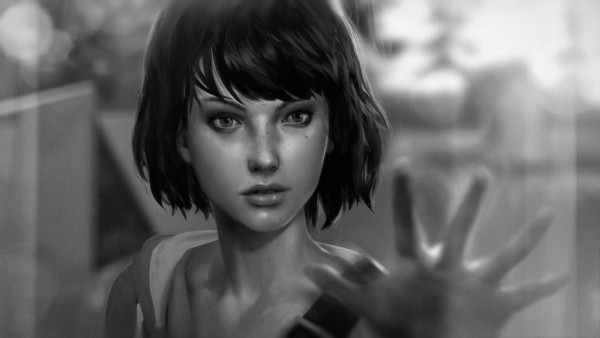
Max Caulfield and Chloe Price. You don’t know them yet but by the end of “Life is Strange” you will be crying with them. “Life Is Strange,” developed by DONTNOD Entertainment and published by Square Enix, is the latest episodic video game series to hit the market and it is arguably the best one yet.
You play as Max Caufield, an 18-year-old photography student at the prestigious Blackwell Academy located in the fictional town of Arcadia Bay, Oregon. During one of her classes taught by world renowned photographer, Mr. Mark Jefferson, Max has a daydream of a tornado descending on Arcadia Bay. After class she composes herself by running to the bathroom and witnesses her best friend Chloe Price get shot by another student at Blackwell Academy, Nathan Prescott. Max then rewinds time and quickly races to save Chloe from getting murdered.
That’s only the beginning of one of the most intense and emotionally charged gaming experiences either of us have ever played. The game consists of five episodes which each build and improve on the previous one. By the end of episode one you will begin to become invested in these characters lives and will be itching to find out where the story goes. It leaves you wanting more at every turn and doesn’t pull any punches in it’s storytelling.
The player can use Max’s powers to rewind events within specific intervals of time, allowing her to fix problems or impact the way things turn out. As you play through the chapters her powers increase, allowing for greater manipulation of time and space. She goes from only knowing how to rewind minutes at a time to eventually learning how to move her consciousness through her memories years into the past.
It took us months to beat “Life is Strange,” as new episodes were released every few months starting in January. Thankfully, as of Oct. 20, all five episodes have been released and there’s never been a better time to play this game.
The game forces the player to make difficult decisions at every turn. Yes, you can always rewind time if you feel you made the wrong choice, but often there will be consequences no matter what. There is no “right” answer to any problem, this isn’t a process of trial and error. The story features many branching scenarios and each one has it’s own consequences.
The beauty of this game is the weight in which every decision holds. Just like in our own lives, every decision carries it’s own weight and every choice has an impact. Some choices matter less than others, such as choosing whether or not to water the plant in Max’s dorm room.
There are some instances in “Life is Strange” where you can’t rewind. Although these moments are sparse, they are some of the most important moments in the game. When we hit these moments we debated, for sometimes up to a half hour, about what choice to make and why it would be the “right” one. These moments are what make “Life is Strange” such a compelling title.
“Life is Strange” has some cosmetic problems. The PS4 version sports graphics that appear a generation behind but its visuals are carried by a unique art style and beautiful lighting. Character models have low polygon counts, especially unimportant characters who look like they just escaped from Tony Hawk’s Pro Skater 3. It is very apparent in some locations where meaningless characters are because of how “low-res” they are.
We enjoyed the writing in “Life is Strange.” It felt somewhat cheesy and rushed at times, but for the most part the story was engaging and immersive.
The voice acting is absolutely spectacular. The roles for almost every character are perfectly cast and you can hear the emotion in their voices. Whether it’s the innocent and curious voice of Hannah Telle as Max, the punkish voice of Ashly Burch as Chloe, the snobby voices of Nik Shriner and Dani Knights as Nathan Prescott and Victoria Chase or the calm and collected voice of Dayeanne Hutton as Kate Marsh, every voice fits and makes the game and characters feel that much more real.
While the voice acting is brilliant, the lip synching is not. The lips of almost all the characters will just seemingly open and close with no real emphasis on words.
The biggest problem we had with the game is its ending. We’re not going to spoil anything but let’s just say the ending didn’t incorporate enough of the choices the player made. Like many episodic choice-based games, “Life Is Strange” gives an illusion of free will, meaning that no matter which choices you make, Max will continue down a predetermined path. For a game about the butterfly effect, the ending really comes down to making a brand new choice, one that overshadows the rest. Although the choice at the end is impactful and moving, it could’ve been improved.
“Life Is Strange” has good deal of problems, but this is to be expected out of a game that is pioneering a growing new genre. It is the best we’ve seen of the interactive drama genre, as it delivers deeper emotion and character development than titles such as “The Walking Dead” and “The Wolf Among Us.” Don’t miss this wild ride.
